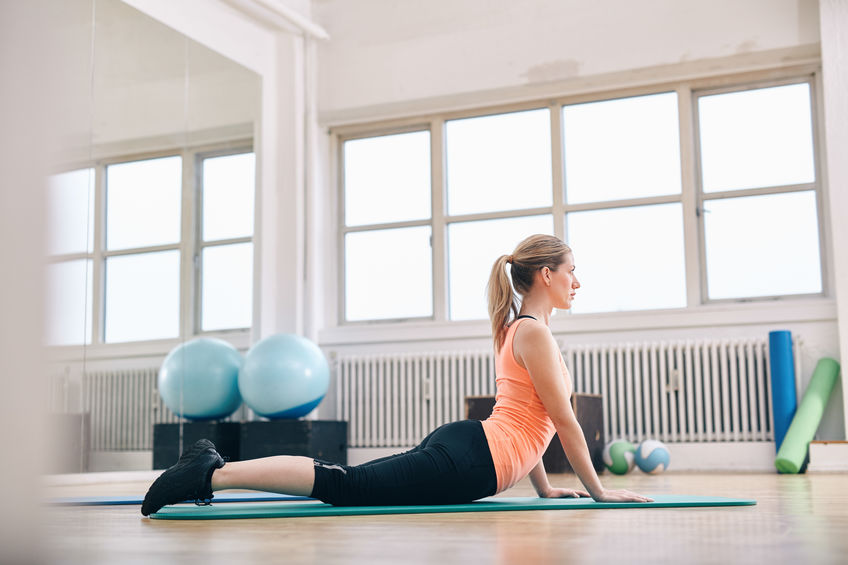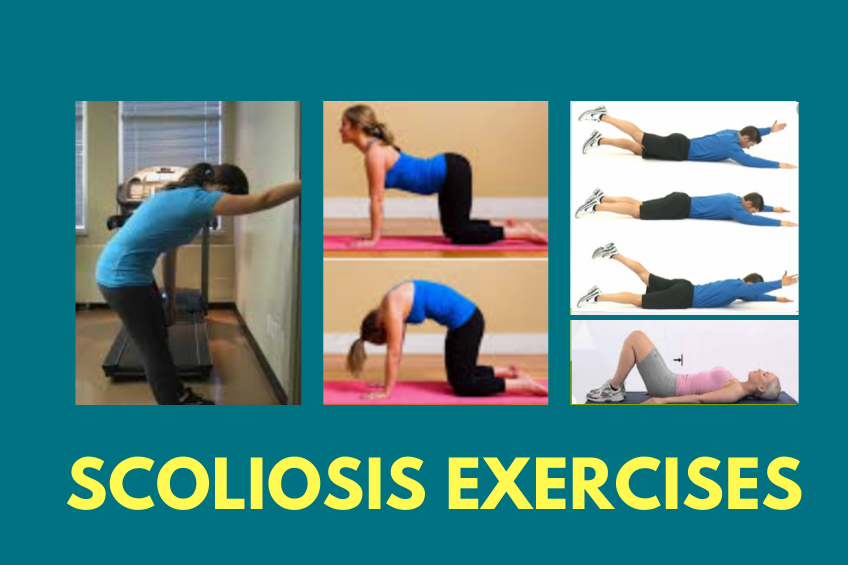Scoliosis In Adults
In the USA, approximately three million people are diagnosed with scoliosis every year. Most of these people are between the ages of 10-13. However, there is a small portion of people between the ages of 60 years of age and older that develop degenerative scoliosis.
Scoliosis in adults is also known as degenerative scoliosis. This condition tends to be underdiagnosed and undermanaged, but most of all poorly prevented. The causes of degenerative scoliosis can be due to pediatric idiopathic scoliosis or a result of the aging process.

Some of the most common scoliosis symptoms in adults include numbness, cramping, shooting pain in the legs, trouble walking, uneven hips or shoulders, and a loss of height. People also frequently experience fatigue from the extra strain placed on their lower back and legs.
As we age, the structure of our bodies weakens including muscles, bones, ligaments, and tendons. This weakening leads to heavier loads on joints, especially the spine. It is important to be aware of how these changes affect our bodies.
Individuals with scoliosis need to learn how to manage their condition throughout the course of their lives or the consequences can be very detrimental. Even adults that have not been diagnosed with scoliosis need to be cognizant of ways to manage the risk of developing it.
Understanding how the body changes over time
Muscles
Muscles that help to maintain the movement of our bodies and provide support to our skeleton suffer muscle loss called sarcopenia. This is a natural part of aging but can take a toll on the support our spines need to function normally. We begin to lose muscle mass at the rate of 3%-5% every 10 years beginning at age 30. Studies indicate that most individuals lose about 25%-30% of their muscle mass in their lifetime.
Ligaments and Joint Capsules
Ligaments are short bands of strong, flexible fibrous connective tissue which connects two bones which aids in supporting joints and limiting unwanted mobility. Ligaments and joint capsules decrease in stiffness and strength as a result of aging and decrease in their ability to heal from injury or trauma.
Bone Density
Bone density is determined by the amount of bone formation (osteoblasts) vs bone breakdown (osteoclasts). From ages 25-50, the activity of osteoblasts and osteoclasts keep the bone density of the body stable. However, after the age of about 50, osteoclast activity is greater than that of osteoblasts causing the loss of bone density. This bone density loss can lead to both osteopenia and osteoporosis. These conditions increase the risk of fractures, degeneration of bones in the spine creating a loss of height, scoliosis, etc.
Degenerative Discs
Intervertebral discs are found between each vertebrae in the spinal column. Each of these discs form a fibrocartilaginous joint to allow slight movement of the vertebrae, to act as a ligament does to hold the vertebrae together, and functions to attenuate or absorb shock for the spine.
As we age, the discs that are located between each of our vertebrae begin to dry out and no longer cushion the bones. Without the ability of the discs to absorb shock, the nerve roots or spinal cord (or both) start to get pinched or pressured. This condition is called aging degeneration or disc degeneration. When the disc degenerates uneven, the loads and forces being placed on the spine are also uneven. Hence, the breakdown of the spine in an uneven fashion creates a scoliotic curve. In order for the body to maintain its balance, compensatory curves and/or movement begin, further causing the body injury and/or pain. Degeneration of the discs can lead to contact between bone, pinched nerves, and fatigue as the body tries to compensate for the structural imbalance.
Adult Scoliosis Prevention
Because weakening musculature contributes to scoliosis, strengthening the muscles responsible for supporting the spine can help. People who have scoliosis or are at risk for developing it should maintain a high level of activity. Low-impact exercises like swimming and yoga are often ideal.

Conditions which affect bone health, like osteoporosis, can lead to degenerative scoliosis. Two of the most significant ways to maintain bone health include losing excess weight and having a diet that’s rich with vitamin D and calcium. Getting an average of 7 hours of sleep is also a significant factor to allow the spine to rehydrate unloaded by gravity.
Scoliosis Treatment in Adults
Very few people require surgery for scoliosis. It’s only necessary when spinal curvature continues to worsen beyond a certain point or when pain becomes unmanageable using conservative treatments. For most people, conservative treatments produce the best results. Drugs that treat inflammation can help manage pain associated with degenerative scoliosis. This is a only short-term solution. They are more of a means of helping to cope with the pain of rebuilding the strength needed for activities of daily living. Adults with scoliosis have been able to use the custom WCR brace to help with pain relief while allowing them to strengthen their muscles. Bracing is the only non-surgical treatment proven to reduce the progression of scoliosis curves, as Schroth therapy which is specific to scoliosis helps tremendously in combination with the brace.
Prevention Exercises
Talk to your doctor or physical therapist to see if these exercises would be beneficial for you to do before trying them. I highly recommend seeking a consultation and evaluation by a Schroth Therapist. Schroth Therapists specialize in treating scoliosis, all curves are different, and some exercises are contraindicated based on the condition of your spine.
Arm Leg Raise
Arm/leg raises strengths the lower back and core muscles, which support your spine.
1) Lie on your stomach with your chin or forehead to the ground. Hold your legs straight and arms extended overhead.
2) Slowly raise one arm off the ground, hold for a moment, and lower it back to the ground.
3) Now repeat this for your other arm and legs, 15 repetitions each. You may prefer a slightly more intense version of this exercise, which requires additional balance and coordination. This version is sometimes called an opposite arm/leg raise, or a bird-dog exercise.
4) Get on your hands and knees. Keep your spine straight, with your hands directly below your shoulders and your knees aligned directly under your hips.
5) Reach out with an arm and keep it straight and level. At the same time, extend the leg on your opposite side, keeping it straight and level.
6) Hold for a few deep breaths, then gently lower your arm and leg to starting position.
7) Repeat this exercise with your other arm/leg. Try for 10 to 15 repetitions on each side.
Some people may even want to perform this exercise by lying with their stomach over an exercise ball. Talk to your health care provider to determine which version of this exercise suits you best.
Pelvic Tilt
The pelvic tilt helps strengthen your abdominal muscles. It is recommended you perform it on a yoga mat.
1) Lie on your back. Bend your knees so both feet are flat on the surface with toes pointed forward.
2) Pull your belly button in so your pelvis pushes toward the ceiling and your back flattens against the ground.
3) Hold this position for 20 seconds, and then relax. Try to do this exercise 10 times. Make sure you rely on your core muscles to perform the pelvic tilt, rather than pushing with your legs.
This exercise appears simple but can be tricky to get right, so you may want to practice technique with a physical therapist or other qualified healthcare provider.
Cat/Cow Exercise
This exercise stretches the muscles and tendons that support your spine.
1) Start on your hands and knees. Align your arms straight under your shoulders and your knees under your hips.
2) Look at the floor, keeping your head straight in line with your torso and spine.
3) Round your back, lifting your spine toward the ceiling. Your eyes should face your belly.
4) Hold for a deep breath.
5) Slowly lift your chest and tailbone toward the ceiling, letting your stomach sink toward the ground. Your eyes will look up toward the ceiling.
6) After another breath, gently round your back and lift your spine toward the ceiling again. Alternate between the poses.
The cat/cow provides a gentle strengthening exercise for your abdominals and stretches your lower back.
Latissimus Stretch
This stretch can help elongate and strengthen your lat muscles, which may feel tight due to scoliosis.
1) Stand with your feet shoulder-width apart, slightly bent at the knees.
2) Reach overhead and grab your left wrist with your right hand.
3) Bend at your right side until you feel a stretch along your left trunk. Put most of your body weight on your right leg.
4) Hold for 5 to 10 seconds, then return to the starting position by pushing from your right foot.
5) Try this exercise on the opposite side.


